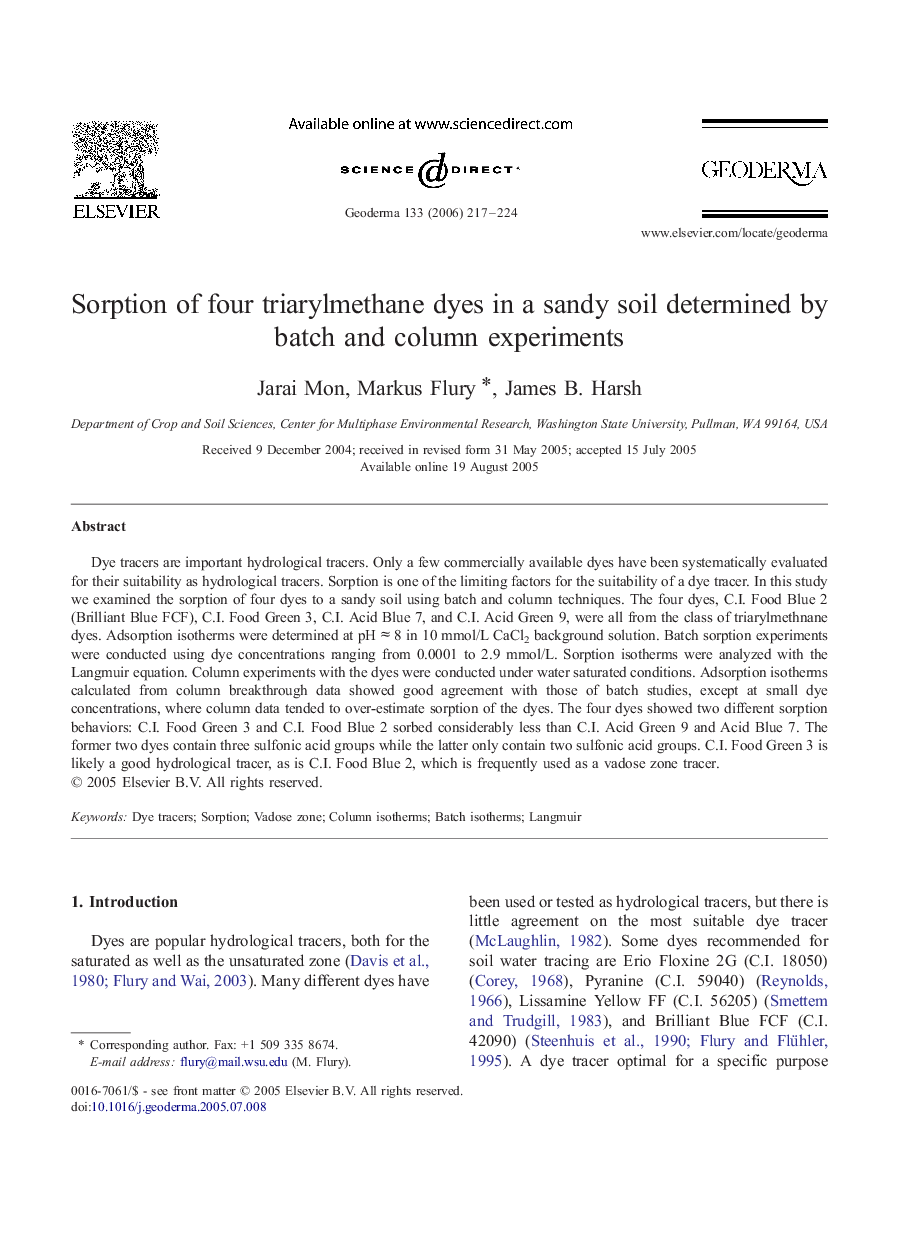| Article ID | Journal | Published Year | Pages | File Type |
|---|---|---|---|---|
| 4575830 | Geoderma | 2006 | 8 Pages |
Dye tracers are important hydrological tracers. Only a few commercially available dyes have been systematically evaluated for their suitability as hydrological tracers. Sorption is one of the limiting factors for the suitability of a dye tracer. In this study we examined the sorption of four dyes to a sandy soil using batch and column techniques. The four dyes, C.I. Food Blue 2 (Brilliant Blue FCF), C.I. Food Green 3, C.I. Acid Blue 7, and C.I. Acid Green 9, were all from the class of triarylmethnane dyes. Adsorption isotherms were determined at pH ≈ 8 in 10 mmol/L CaCl2 background solution. Batch sorption experiments were conducted using dye concentrations ranging from 0.0001 to 2.9 mmol/L. Sorption isotherms were analyzed with the Langmuir equation. Column experiments with the dyes were conducted under water saturated conditions. Adsorption isotherms calculated from column breakthrough data showed good agreement with those of batch studies, except at small dye concentrations, where column data tended to over-estimate sorption of the dyes. The four dyes showed two different sorption behaviors: C.I. Food Green 3 and C.I. Food Blue 2 sorbed considerably less than C.I. Acid Green 9 and Acid Blue 7. The former two dyes contain three sulfonic acid groups while the latter only contain two sulfonic acid groups. C.I. Food Green 3 is likely a good hydrological tracer, as is C.I. Food Blue 2, which is frequently used as a vadose zone tracer.
